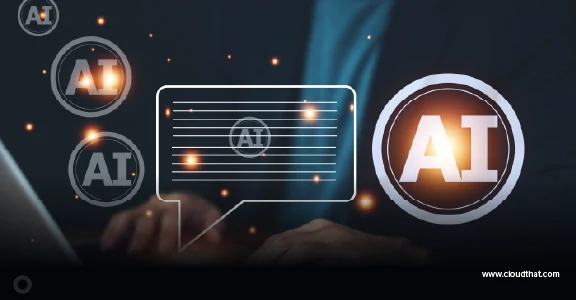|
Voiced by Amazon Polly |
Ever been told generative AI is “too complex” for non-technical people? That’s what I thought too, until I discovered NVIDIA’s Deep Learning Institute course. Talk about a game-changer.
The course strips away the intimidation factor of generative AI and replaces it with hands-on knowledge you can actually use. Whether you’re just curious or looking to implement GenAI in your organization, this is your roadmap.
NVIDIA’s “Fundamentals of Generative AI” doesn’t just explain the technology—it demystifies it. You’ll understand the core concepts without drowning in technical jargon.
But here’s what they don’t tell you upfront: the most valuable insights aren’t in the course description. They’re hidden in the exercises that make you think differently about what AI can actually do for you.
Enhance Your Productivity with Microsoft Copilot
- Effortless Integration
- AI-Powered Assistance
Understanding NVIDIA's Role in Generative AI Development
How NVIDIA’s Technologies Power Modern AI Systems?
NVIDIA has completely transformed how AI systems operate today. Their GPUs aren’t just for gamers anymore – they’re the backbone of AI development worldwide. Why? Because training complex AI models requires massive parallel processing power that traditional CPUs just can’t deliver.
Take the NVIDIA A100 and H100 data center GPUs. These beasts can handle thousands of calculations simultaneously, making them perfect for the matrix math operations that power generative AI. We’re talking 10-20x faster processing than traditional hardware.
What makes NVIDIA special is their unified computing architecture called CUDA. This platform lets developers tap directly into all that GPU power without needing to be hardware experts. Paired with their specialized Tensor Cores (designed specifically for AI workloads), they’ve created an ecosystem that’s practically essential for any serious AI development.
The numbers tell the story. Over 90% of generative AI startups use NVIDIA hardware. For large language models like GPT-4, training times drop from years to months when using NVIDIA’s technology stack.
NVIDIA's Contributions to Generative AI Research
NVIDIA doesn’t just build the hardware – they’re pushing the boundaries of what’s possible with generative AI.
Their research division has pioneered several breakthrough techniques. StyleGAN is probably their most famous contribution – it revolutionized image generation with unprecedented quality and control. Those realistic human faces you see that don’t belong to real people? Thank NVIDIA for that.
But they’ve gone way beyond images. Their work on neural radiance fields (NeRF) is transforming 3D rendering, letting AI generate photorealistic 3D scenes from a handful of 2D images. Game developers and VFX studios are drooling over this stuff.
NVIDIA’s research papers are consistently among the most cited in AI conferences. They don’t just publish theory either – they release practical tools through their NVIDIA AI platform that help developers implement cutting-edge techniques.
The Strategic Partnership Between NVIDIA and Leading AI Companies
NVIDIA isn’t building the AI future alone. They’ve formed strategic partnerships with virtually every major player in the AI space.
With OpenAI, they’ve optimized infrastructure for training massive language models. Microsoft relies heavily on NVIDIA for their Azure AI offerings. Google Cloud’s AI infrastructure? Powered by NVIDIA. Amazon’s AWS? Same story.
These aren’t just vendor relationships. NVIDIA works deeply with these partners to co-develop technologies that push boundaries. Their collaboration with Meta on the Research SuperCluster helped create one of the world’s largest AI supercomputers.
What makes these partnerships work is NVIDIA’s approach. They don’t just sell chips – they provide entire solutions including software frameworks, development tools, and specialized expertise. For companies building generative AI products, partnering with NVIDIA gives them a massive head start.
Key Components of NVIDIA's Generative AI Course
- Hardware Requirements and Specifications
Diving into NVIDIA’s Generative AI course? You’ll need some serious computing power. This isn’t your average “any laptop will do” type of learning experience.
At minimum, you’re looking at an NVIDIA GPU with at least 8GB VRAM – think RTX 3060 or better. For those serious about training their own models, 16GB+ VRAM becomes essential (RTX 4090 or A100 territory).
Here’s what different setups can handle:
| Hardware Level | GPU | VRAM | Best For |
| Entry Level | RTX 3060/3070 | 8-10GB | Running pre-trained models |
| Mid-Range | RTX 3080/3090 | 12-24GB | Fine-tuning models |
| Professional | RTX 4090/A100 | 24-80GB | Training custom models |
Cloud alternatives exist if you’re not ready to invest. NVIDIA offers cloud instances through their LaunchPad program specifically tailored for course participants.
Don’t forget about supporting hardware – 32GB+ system RAM and fast SSD storage (at least 1TB) will prevent bottlenecks when processing massive datasets.
- Software Frameworks and Development Tools
The software stack for this course is comprehensive but carefully curated. Everything revolves around these core components:
NVIDIA’s ecosystem takes center stage with CUDA (11.8+) forming the foundation. TensorRT and cuDNN accelerate your deep learning tasks dramatically.
The course heavily leverages PyTorch with NVIDIA extensions. You’ll get hands-on with Omniverse for 3D applications and NeMo for natural language tasks.
For development environments, the course provides pre-configured Docker containers – saving you hours of dependency hell. Most students work within JupyterLab notebooks that come pre-installed with all required libraries.
Version control is non-negotiable – you’ll use Git workflows to track your model iterations and collaborate with peers.
The real game-changer? NVIDIA TAO Toolkit for transfer learning and NVIDIA Modulus for physics-informed machine learning. These aren’t just academic tools – they’re production-grade frameworks used by industry leaders.
- Practical Applications and Use Cases
This isn’t just theoretical fluff. The course tackles real-world applications that companies are implementing today.
You’ll build a text-to-image generator similar to DALL-E using diffusion models. Another project involves creating a chatbot that can answer questions about your own data – think custom GPT but trained on your specific domain.
The healthcare module shows you how to generate synthetic medical images for training diagnostic AI while preserving patient privacy.
For gaming and simulation enthusiasts, there’s a full section on generating 3D assets and environments procedurally.
My favorite part? The autonomous systems unit where you’ll train reinforcement learning agents in NVIDIA’s Isaac Sim environment.
What makes these projects stand out is their commercial relevance. Each one includes deployment strategies and optimization techniques for production environments.
Students have leveraged these projects to:
- Launch AI startups with minimal data
- Automate content creation workflows
- Develop digital twins for manufacturing
- Create personalized education systems
Mastering Generative AI Fundamentals with NVIDIA
This course isn’t about memorizing AI buzzwords or watching someone else code — it’s about getting your hands dirty and building stuff that actually works.
NVIDIA has structured the learning journey so that each module builds your intuition before throwing complex terms at you. It’s like learning to drive by actually sitting in the car instead of reading the manual first. You’ll start with the “why” behind generative AI — why it matters, where it fits, and how it’s changing industries — then gradually move into the “how.”
One thing I appreciated? You don’t need to be a math genius. The math is there, but it’s wrapped around real-world examples. Want to understand how Stable Diffusion generates images? They’ll show you — not with equations, but by helping you build one from scratch and tweak it until it clicks.
What really sets this course apart is the feedback loop. You experiment, see what works, break things (on purpose), and fix them. This is where true mastery begins — not from watching, but doing. By the time you hit the final project, you’re not just familiar with generative AI concepts — you’re comfortable using them to solve problems.
And no, you’re not alone. The DLI community is active, with mentors and learners exchanging ideas, troubleshooting code, and celebrating breakthroughs. It’s more than a course — it’s a launchpad.
Career Opportunities and Industry Applications
Let’s be real — generative AI isn’t just cool, it’s career gold. Once you understand how to use it, you start seeing opportunities everywhere.
Graduates of NVIDIA’s Generative AI course aren’t just adding a line on their résumé — they’re stepping into roles that didn’t even exist a few years ago. Think Prompt Engineer, AI Product Strategist, Synthetic Data Specialist, Generative Content Creator, and more. Companies are hiring people who can bridge the gap between creativity and code — and that’s exactly what this course trains you to do.
The best part? You don’t need to become a full-time researcher to have impact. Whether you’re in marketing, healthcare, manufacturing, or entertainment, generative AI has a use case. Content teams are using it to automate blog and ad creation. Game developers are building 3D assets in hours instead of weeks. Healthcare startups are generating realistic medical images to train diagnostic tools — without patient data ever leaving the premises.
Even traditional industries are catching on. Banks are using GenAI to simulate fraud scenarios. Retailers are personalizing customer experiences with AI-generated recommendations and images. Education companies are creating custom learning modules tailored to each student’s pace and needs.
And here’s the kicker: because NVIDIA is already deeply embedded in the tech stacks of these industries, completing this course gives you an edge that recruiters notice. You’re not just familiar with GenAI — you’re trained on the same tools that top AI teams are using in production.
Conclusion
Generative AI might sound futuristic, but with the right guidance — like NVIDIA’s course — it becomes surprisingly approachable. You don’t need a PhD or a decade of coding experience to start building and innovating with this tech.
What you do need is curiosity, a willingness to experiment, and the right tools — and that’s exactly what NVIDIA delivers. From understanding the fundamentals to applying them in real-world scenarios, this course is more than just educational. It’s empowering.
Whether you’re pivoting into AI, upskilling for your current role, or just exploring where tech is heading, learning generative AI through NVIDIA isn’t just a smart move — it’s a career catalyst.
So if you’ve been waiting for a sign to dive into generative AI, this is it. The future is being built right now — and NVIDIA is handing you the blueprint.
Access to Unlimited* Azure Trainings at the cost of 2 with Azure Mastery Pass
- Microsoft Certified Instructor
- Hands-on Labs
- EMI starting @ INR 4999*
About CloudThat
CloudThat is an award-winning company and the first in India to offer cloud training and consulting services worldwide. As a Microsoft Solutions Partner, AWS Advanced Tier Training Partner, and Google Cloud Platform Partner, CloudThat has empowered over 850,000 professionals through 600+ cloud certifications winning global recognition for its training excellence including 20 MCT Trainers in Microsoft’s Global Top 100 and an impressive 12 awards in the last 8 years. CloudThat specializes in Cloud Migration, Data Platforms, DevOps, IoT, and cutting-edge technologies like Gen AI & AI/ML. It has delivered over 500 consulting projects for 250+ organizations in 30+ countries as it continues to empower professionals and enterprises to thrive in the digital-first world.

WRITTEN BY Sayan Khandait
Sayan is a Research Associate with over 2.5+ years of experience in Cloud. He is an MCT and also the winner of Top 100 MCT Quality Awards Winner for 2024-25. Sayan has a training background of using interactive coding or other practical scenarios making it engaging and fun. He has a passion for cyber security, ethical hacking and coding, rooting from a BTech degree in CSE. Sayan holds multiple certifications starting from Beginner level to Expert level in the fields of Azure Developer Services, Azure AI Services and Azure Data Services.


 Login
Login


 June 17, 2025
June 17, 2025 PREV
PREV










Comments